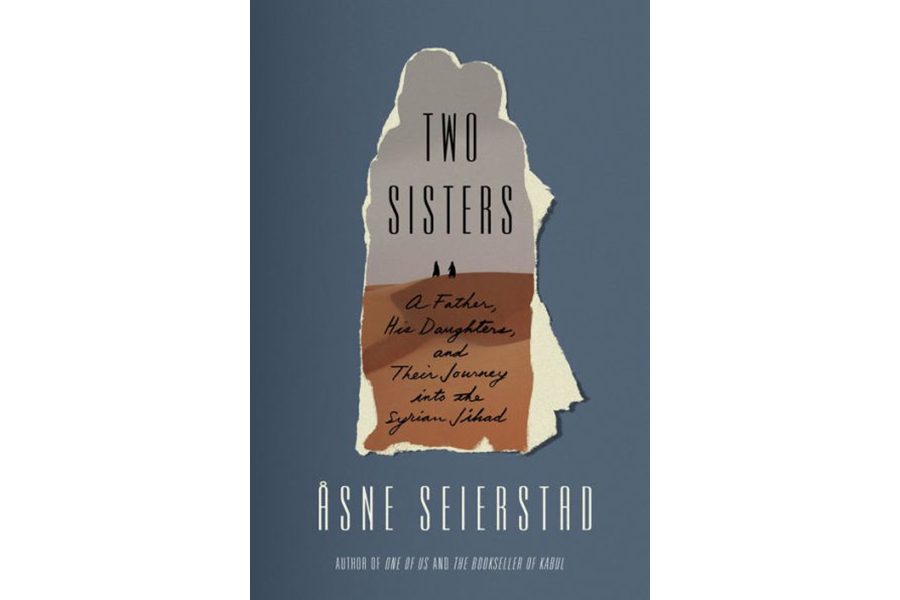'Two Sisters' follows a father trying to bring his two daughters home from jihad in Syria
Immigrant communities wash up in the seemingly strangest of places. There is, for instance, a significant Yemeni population in Hamtramck, Michigan. Oklahoma City can boast a large number of Vietnamese. Likewise, there is a gathering of former residents of the self-proclaimed Moslem nation of Somaliland in and around Oslo, Norway. It is a long way to Oslo from Hargeisa, capital of Somaliland. (No shame – look it up in an atlas.)
Somaliland may be invisible in the eyes of the international nation-states, but it is a very real place to the northwest of Somalia, east of Ethiopia, and south of Djibouti, at the pinch-point entrance to the Red Sea. There are few opportunities for making a living in Somaliland, so immigrant communities spread about Europe and farther afield are inevitable. Some industrious Somalilander discovered that there was a chance of employment in Norway, or that Norway was particularly amenable to asylum seekers.
Word made it back to Hargeisa, to the family of Sadiq and Sara and their baby daughter, Ayan. They moved to a town outside Oslo – out of the frying pan and into the icebox – and Sadiq found work and they raised a family. By the time we meet them in Åsne Seierstad’s Two Sisters, the family has grown with the addition of Ismael, 18; Leila, 16; Jibril, 11; and Isaq, 6. Sadiq is on disability due to an accident at his workplace and Sara is a housewife.
Although they come from a family of nonpracticing Muslims, Ayan and Leila (perhaps more than a little in her sister’s footprints) are first drawn to the religion and then catch the jihadist impulse. Readers will not learn the reasons behind this radical conversion. Seierstad – a Norwegian journalist turned bestselling international author – suggests “the search for identity, meaning, and status; the desire to belong; the influence of others; excitement; the need to rebel; and romantic notions," or maybe a combination, or pure fervor. Readers will never meet the girls in "Two Sisters" after they have left, except through electronic communication, sporadic and mostly uninsightful, with their family.
What we do know is that they have flown Oslo in the dead of night and made their way to Syria during its short-lived caliphate period. The story thread here is Sadiq’s attempts to bring the girls home. But Seierstad has told it in the form of living theater and, as such, the book has all the momentum of Thomas the Tank Engine. There are long sections of aimless messaging between Ismael and Leila, and time slows as pieces are moved around the board as in a draw-bound chess match.
From pages describing one contact’s attempt to snatch the girls: April 9: “‘We’re leaving for Raqqa [where the girls are living] in two days’.... April 11: ‘The tank truck left Deir al-Zour this morning.’ April 12: ‘Things are going according to plan.’ April 13: ‘We are ready to make our move.’ April 14. ‘We’re standing by. They’re bombing the roads’.... April 20: ‘We’re standing by to punch, punch, punch.’ April 21: ‘The plan is being put into action in one hour.’ April 22: ‘Raqqa here. Nothing to report.’”
The desperation of Sadiq’s task is compounded by the fact the girls don’t want to be found and return to Norway. “We did this 100% for Allah’s sake. Not for any boyfriends of anyone else.” They didn’t go to fight: “ISIS did not allow women near the front line” – until it became convenient to use them as shields later on – “the privilege of the men.”
They went to establish the caliphate, or protect Islam, or out of duty and identity, you name it, but what they became was “housewives”: for the unmarried women who arrived at the caliphate, “they married, which as a rule they did quickly, often immediately after arriving.” Mothers, too, for the caliphate needed citizens, and both Ayan and Leila add their contribution.
Of course, most every life has some excitement or story worth relating, and there are a number in "Two Sisters": Sadiq’s initial attempt to reach his daughters, in which he winds up in a blackened cesspit awaiting beheading, is certainly one, and there is a interregnum in the story that flashes back to the girls' earlier years in Norway that provides a slice of the surrounding circumstances in which they lived and developed.
To make the story yet more dumbfounding are the ambiguities (one town was “a quagmire of organized crime, strict Islamic control – and anarchy”) and when, in what apparently springs out of a hollowed-out Sadiq’s fever dream, we read that the young women decide to come home and abandon their quest, only to learn, on the turn of a dime, that no, “The truth was: They had chosen a life without him. They were making pancakes in Raqqa. With sugar topping.” Talk about beating a dead horse. Who needs more misery when what Seierstad has delivered is a good dose of raw, slow agony on one hand and raw, unaccounted ecstasy on the other, and, to all appearances, never these two shall meet.









